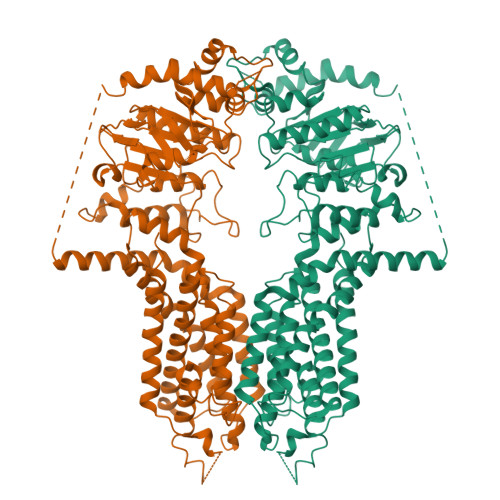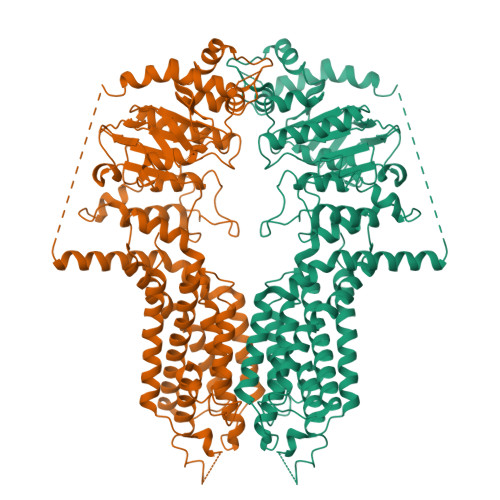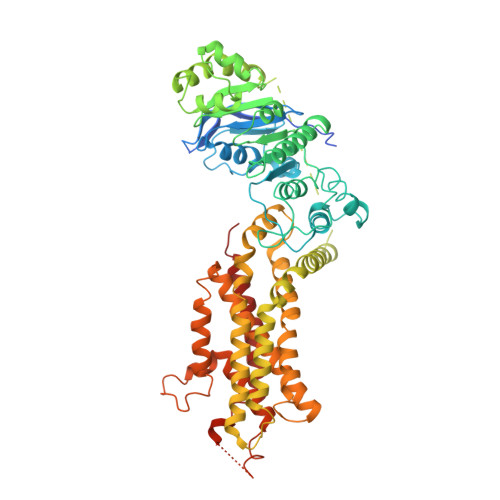Structural basis for abscisic acid efflux mediated by ABCG25 in Arabidopsis thaliana.
Ying, W., Liao, L., Wei, H., Gao, Y., Liu, X., Sun, L.(2023) Nat Plants 9: 1697-1708
- PubMed: 37666962
- DOI: https://doi.org/10.1038/s41477-023-01510-0
- Primary Citation of Related Structures:
8IWJ, 8IWK, 8IWN, 8K0X, 8K0Z - PubMed Abstract:
Abscisic acid (ABA) is a phytohormone essential to the regulation of numerous aspects of plant growth and development. The cellular level of ABA is critical to its signalling and is determined by its rate of biosynthesis, catabolism and the rates of ABA transport. ABCG25 in Arabidopsis thaliana has been identified to be an ABA exporter and play roles in regulating stomatal closure and seed germination. However, its ABA transport mechanism remains unknown. Here we report the structures of ABCG25 under different states using cryo-electron microscopy single particle analysis: the apo state and ABA-bound state of the wild-type ABCG25 and the ATP-bound state of the ATPase catalytic mutant. ABCG25 forms a homodimer. ABA binds to a cone-shaped, cytosolic-facing cavity formed in the middle of the transmembrane domains. Key residues in ABA binding are identified and verified by a cell-based ABA transport assay. ATP binding leads to closing of the nucleotide-binding domains of opposing monomers and conformational transitions of the transmembrane domains. Together, these results provide insights into the substrate recognition and transport mechanisms of ABCG25 in Arabidopsis, and facilitate our understanding of the ABA transport and signalling pathway in plants.
Organizational Affiliation:
The First Affiliated Hospital of USTC, MOE Key Laboratory for Membraneless Organelles and Cellular Dynamics, Hefei National Research Center for Interdisciplinary Sciences at the Microscale, Division of Life Sciences and Medicine, University of Science and Technology of China, Hefei, China.
















